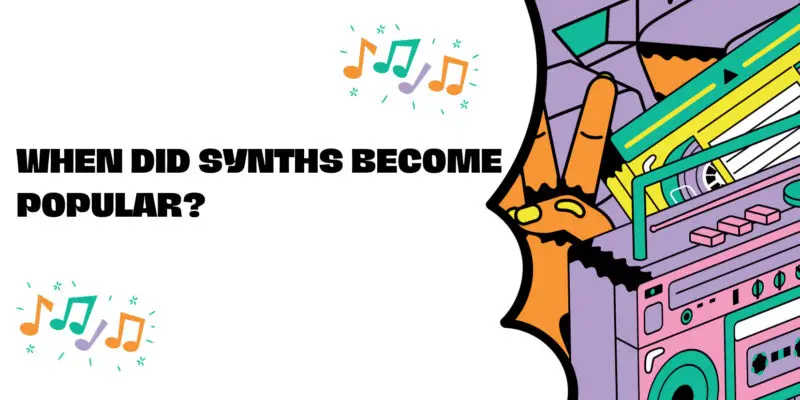Synthesizers, often referred to as synths, have become an integral part of modern music production and performance. Their unique ability to create a wide range of sounds, from classic analog warmth to futuristic digital textures, has left an indelible mark on the music industry. But when did synths become popular, and how did they evolve into the essential instruments they are today? Let’s take a journey through time to explore the fascinating history of synthesizers and their rise to popularity.
The Birth of Synthesizers
The concept of electronic music dates back to the late 19th and early 20th centuries when inventors like Thaddeus Cahill developed the Telharmonium, an early electronic musical instrument that generated sounds through rotating tone wheels. However, the true birth of the modern synthesizer can be traced back to the mid-20th century.
In the 1950s and 1960s, pioneers in electronic music like Robert Moog, Don Buchla, and Vladimir Ussachevsky began experimenting with electronic sound generation and manipulation. Robert Moog, in particular, played a pivotal role with the development of the Moog synthesizer, which became commercially available in the mid-1960s. This marked the beginning of the synthesizer’s journey into the world of popular music.
The 1960s and Early 1970s: Synths as Novelty
During the 1960s, early synthesizers were seen as experimental instruments and were mainly used in academic and avant-garde music circles. Bands like The Beach Boys, The Beatles, and The Rolling Stones started incorporating synthesizers into their music, albeit sparingly, adding a touch of novelty to their sound.
However, it was Wendy Carlos’s groundbreaking 1968 album “Switched-On Bach,” which featured classical compositions performed on a Moog synthesizer, that brought the synthesizer to the forefront of popular culture. The album’s commercial success helped pique public interest in synthesizers.
The Progressive Rock Movement
The early 1970s saw a surge in the popularity of synthesizers, particularly in the progressive rock genre. Bands like Pink Floyd, Emerson, Lake & Palmer, and Yes began using synthesizers extensively, creating epic and experimental soundscapes. Albums like Pink Floyd’s “The Dark Side of the Moon” (1973) and Yes’s “Close to the Edge” (1972) showcased the synthesizer’s potential for creating otherworldly textures and atmospheres.
The Rise of Synth-Pop in the 1980s
The 1980s brought about a significant shift in the use of synthesizers. Synth-pop, a genre characterized by its heavy use of synthesizers and electronic instrumentation, emerged as a dominant force in popular music. Acts like Depeche Mode, New Order, and The Human League embraced the synthesizer as a central element of their sound.
The affordability of digital synthesizers, such as the Yamaha DX7, played a crucial role in the genre’s rise. The DX7, released in 1983, offered a wide range of realistic and expressive sounds, making it a favorite among musicians and producers. Synth-pop’s catchy melodies and electronic beats resonated with a wide audience, propelling synthesizers into the mainstream.
The 1980s also saw the birth of hip-hop, which heavily sampled synthesizer-driven music and laid the foundation for electronic dance music (EDM) in the following decades. Synthesizers became synonymous with electronic beats and futuristic soundscapes.
The Digital Revolution and Beyond
As technology advanced, synthesizers continued to evolve. Digital synthesizers, virtual instruments, and software-based synthesizers proliferated, offering musicians even more creative possibilities. Genres like techno, trance, and house music further popularized synthesizers, pushing the boundaries of electronic music.
In recent years, synthesizers have experienced a resurgence in popular music, with artists like Daft Punk, The Weeknd, and Billie Eilish incorporating them into their chart-topping hits. The versatility and sonic capabilities of modern synthesizers make them indispensable tools for music producers across various genres.
Conclusion
The popularity of synthesizers has come a long way from their early experimental days. From their birth in the mid-20th century to their widespread use in contemporary music, synths have played a pivotal role in shaping the soundscape of popular culture. Whether as instruments of experimentation or tools for creating chart-topping hits, synthesizers have firmly established their place in the pantheon of musical instruments, and their influence is likely to continue evolving as technology advances and musical trends change.

